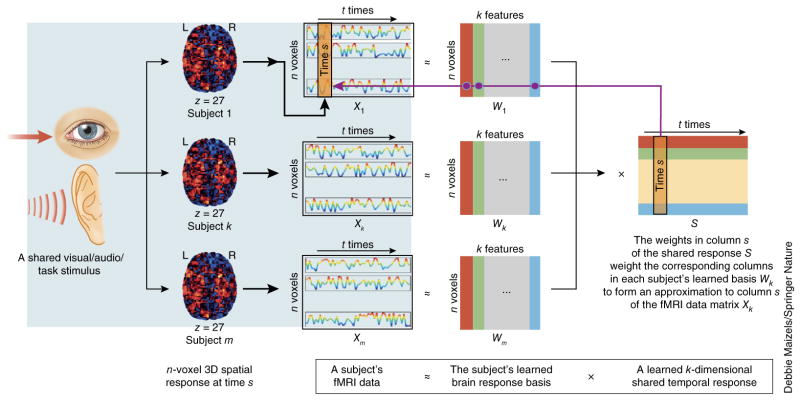Figure 4.
Process for SRM. fMRI data are collected from each of m participants experiencing the same stimulus and then organized into a matrix X (voxels by time). Each matrix X is then factored using a probabilistic latent-factor model into the product of a subject-specific matrix W of k brain maps (an orthogonal basis) and a shared temporal response matrix S of size k by time. That is, for each participant: X = W S + R, where X, W, and the residuals, R (not shown), are subject-specific, and S is shared across participants.

